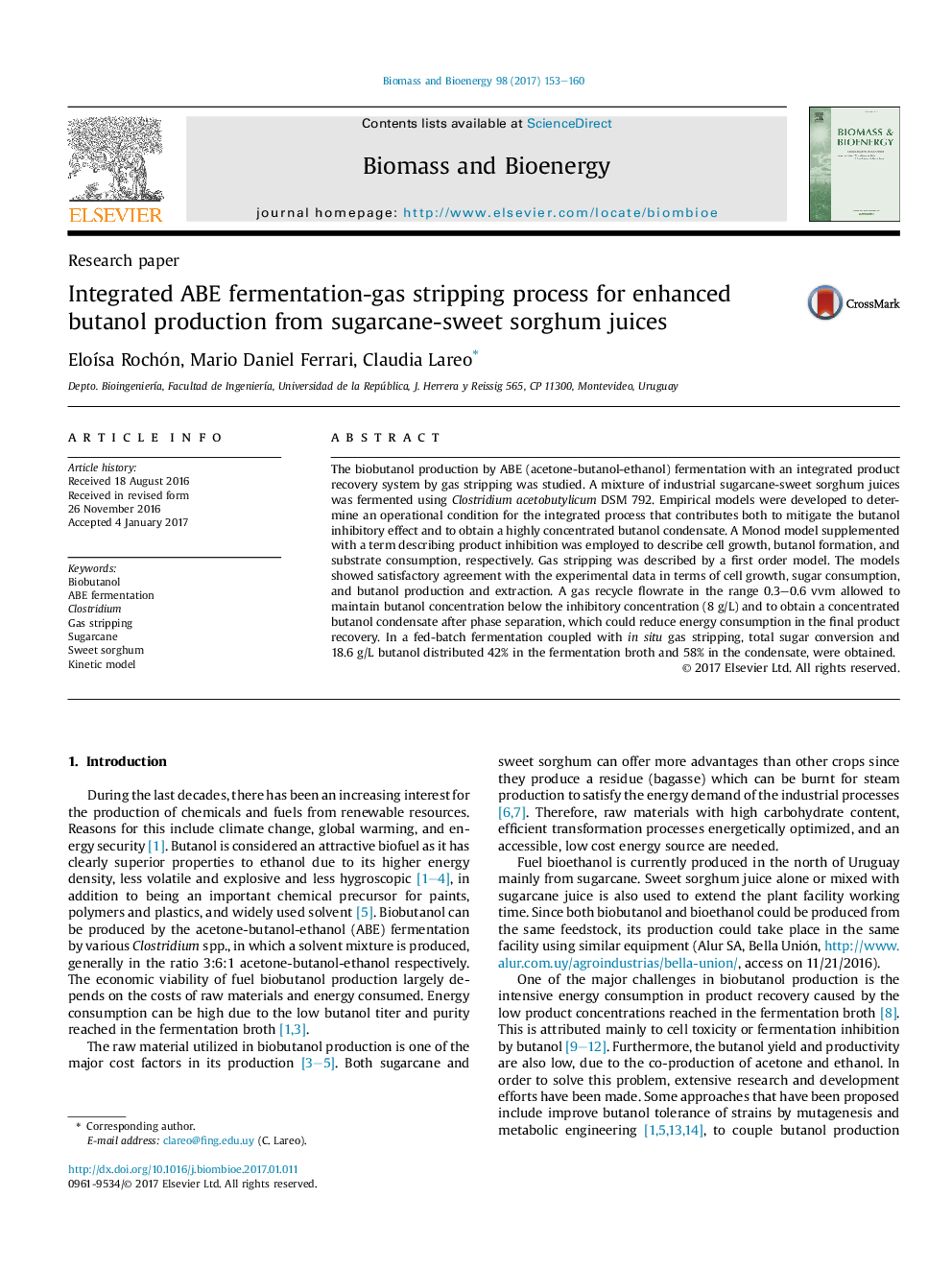| Article ID | Journal | Published Year | Pages | File Type |
|---|---|---|---|---|
| 4996311 | Biomass and Bioenergy | 2017 | 8 Pages |
Abstract
The biobutanol production by ABE (acetone-butanol-ethanol) fermentation with an integrated product recovery system by gas stripping was studied. A mixture of industrial sugarcane-sweet sorghum juices was fermented using Clostridium acetobutylicum DSM 792. Empirical models were developed to determine an operational condition for the integrated process that contributes both to mitigate the butanol inhibitory effect and to obtain a highly concentrated butanol condensate. A Monod model supplemented with a term describing product inhibition was employed to describe cell growth, butanol formation, and substrate consumption, respectively. Gas stripping was described by a first order model. The models showed satisfactory agreement with the experimental data in terms of cell growth, sugar consumption, and butanol production and extraction. A gas recycle flowrate in the range 0.3-0.6 vvm allowed to maintain butanol concentration below the inhibitory concentration (8Â g/L) and to obtain a concentrated butanol condensate after phase separation, which could reduce energy consumption in the final product recovery. In a fed-batch fermentation coupled with in situ gas stripping, total sugar conversion and 18.6Â g/L butanol distributed 42% in the fermentation broth and 58% in the condensate, were obtained.
Related Topics
Physical Sciences and Engineering
Chemical Engineering
Process Chemistry and Technology
Authors
EloÃsa Rochón, Mario Daniel Ferrari, Claudia Lareo,
